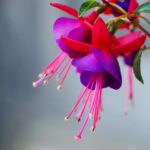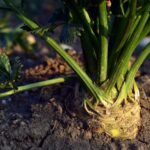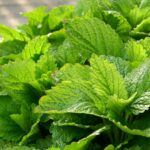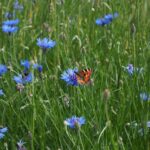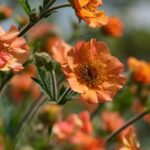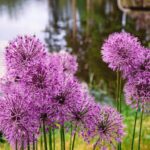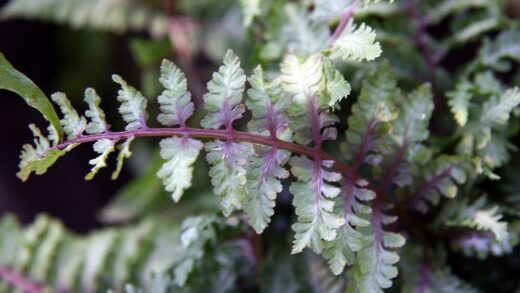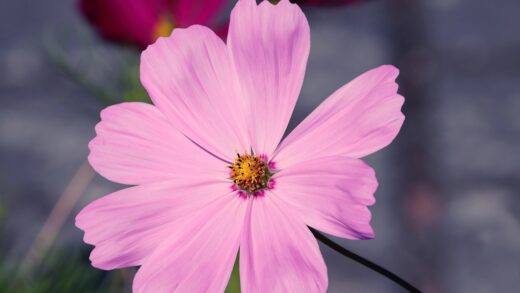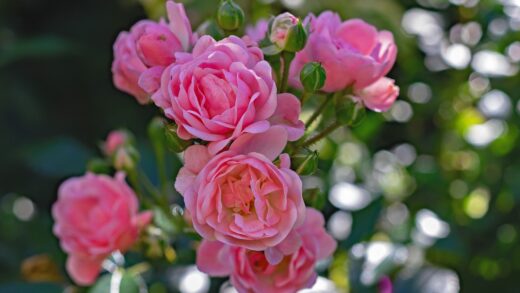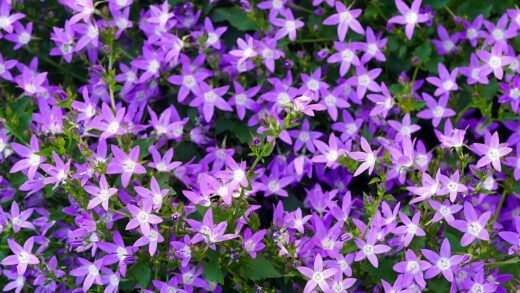The black pine stands as a testament to resilience and structural beauty in the landscape, prized for its deep green needles, rugged bark, and adaptability to a wide range of challenging conditions. Providing proper care for this robust conifer ensures not only its survival but also its ability to thrive and develop into a magnificent specimen that can anchor a garden design for decades. Understanding its fundamental needs, from soil preferences to its relationship with sunlight and water, is the first step toward cultivating a healthy and vigorous tree. This comprehensive guide will walk you through the essential aspects of black pine care, offering professional insights to help you nurture this remarkable species from a young sapling into a mature, awe-inspiring feature of your garden.
Understanding the fundamentals
The black pine is renowned for its tolerance of difficult environmental conditions, including urban pollution, salt spray, and drought, making it an excellent choice for a variety of landscaping applications. Its natural habitat often includes rocky, alkaline soils, which speaks to its incredible adaptability. This inherent toughness, however, does not mean the tree is without needs; rather, it suggests that its requirements are specific and should be respected for optimal growth. Providing the right foundation from the beginning is far more effective than trying to correct problems later in the tree’s life. Therefore, a thoughtful approach to its placement and initial care will pay dividends in the long run.
Successful cultivation begins with a deep appreciation for the tree’s life cycle and growth habits. Black pines have a moderate growth rate and develop a strong, dominant central leader when young, which eventually gives way to a more rounded or flattened crown with age. This maturation process is part of its aesthetic appeal, creating a picturesque silhouette against the sky. Observing the tree’s annual cycle, from the emergence of new candles in spring to the hardening of its needles for winter, allows for timely and appropriate care interventions. This proactive approach ensures you are working with the tree’s natural rhythms rather than against them.
One of the most critical factors in the long-term health of a black pine is its root system. These trees develop a deep taproot, which is essential for anchoring them and accessing moisture from lower soil layers, contributing significantly to their drought tolerance. This root structure means that soil compaction can be a major issue, impeding root growth and access to oxygen and water. Proper soil preparation before planting and avoiding heavy foot or vehicle traffic around the base of the tree are crucial measures to protect this vital underground network and support the overall health of the tree.
Finally, while the black pine is a hardy species, it is not entirely immune to stress. Environmental factors such as prolonged waterlogging, extreme heat waves, or severe nutrient deficiencies can weaken the tree, making it more susceptible to pests and diseases. The core principle of black pine care is, therefore, centered on creating a stable and suitable environment that minimizes stress. By meeting its basic requirements for sunlight, soil drainage, and occasional watering during establishment, you provide the tree with the resources it needs to defend itself and flourish independently for many years.
More articles on this topic
Optimal soil and siting
Choosing the correct location is arguably the most important decision you will make for the long-term health of your black pine. This species absolutely requires full sun exposure, meaning it needs at least six to eight hours of direct sunlight each day to thrive. Insufficient light will lead to sparse foliage, elongated and weak branches, and a general lack of vigor, making the tree more vulnerable to health issues. When selecting a site, observe the sun’s path throughout the day and across different seasons to ensure your chosen spot receives ample, unobstructed light.
The black pine demonstrates a remarkable tolerance for a variety of soil types, but it has one non-negotiable requirement: excellent drainage. It cannot tolerate waterlogged conditions or “wet feet,” which can quickly lead to root rot, a fatal condition for most pines. The ideal soil is a sandy loam or even a gravelly or clay-based soil, as long as water can percolate away from the root zone freely. Before planting, it is wise to test the drainage of your chosen site by digging a hole and filling it with water; if it takes more than a few hours to drain, you will need to amend the soil or choose a different location.
Amending the soil can significantly improve conditions for a black pine, particularly in areas with heavy, compacted clay. Incorporating organic matter such as compost or pine bark fines can improve soil structure and drainage, but this should be done over a wide area, not just in the planting hole itself. Creating a small pocket of improved soil can discourage the roots from expanding into the surrounding native soil. The goal is to create a transition zone that encourages a broad and healthy root system, which is essential for the tree’s stability and nutrient uptake.
Furthermore, consider the mature size of the black pine when selecting its permanent home. These trees can become large, both in height and spread, so planting them too close to buildings, power lines, or other trees can lead to problems in the future. Allow ample space for the canopy to develop without interference and for the root system to expand without damaging foundations or pavement. Proper siting from the outset prevents the need for drastic pruning or removal later on and allows the tree to achieve its full majestic potential.
More articles on this topic
Watering and moisture management
Proper watering is most critical during the black pine’s establishment period, which typically covers the first two to three years after planting. During this time, the tree is developing its root system and is more vulnerable to drought stress. A consistent watering schedule is essential to encourage deep root growth. Provide a thorough, deep soaking once a week during the growing season, especially in the absence of significant rainfall. The goal is to moisten the entire root ball and the surrounding soil, encouraging roots to grow outward and downward in search of moisture.
Once a black pine is well-established, it is exceptionally drought-tolerant, thanks to its deep taproot and water-conserving needles. For mature trees, supplemental watering is rarely necessary except during periods of extreme, prolonged drought. In fact, overwatering is a far greater risk to an established black pine than underwatering. Excessive moisture suffocates the roots by filling the air pockets in the soil, which can lead to root rot and the decline of the tree. It is always best to check the soil moisture before watering; the soil should be allowed to dry out several inches deep between waterings.
The method of watering is just as important as the frequency. Using a soaker hose or a slow-trickle from a garden hose at the base of the tree is the most effective approach. This allows the water to penetrate slowly and deeply into the soil without causing runoff or erosion. It also delivers the water directly to the root zone, minimizing evaporation and ensuring the tree receives the full benefit. Avoid using overhead sprinklers, as wetting the needles for extended periods can create a favorable environment for fungal diseases to develop.
Seasonal adjustments to your watering practices are crucial for maintaining the health of your black pine. In the heat of summer, young trees may require more frequent watering, while in the cooler months of spring and autumn, the need for supplemental water decreases significantly. As winter approaches, it is important to ensure the soil is adequately moist, especially for young trees and in regions with dry winters. A final deep watering in late autumn, before the ground freezes, helps the tree stay hydrated through the winter when frozen soil can create drought-like conditions.
Providing essential nutrients
The black pine is not a heavy feeder and generally performs well in soils of low to average fertility, which mimics its natural growing conditions. In most garden landscapes with reasonably healthy soil, supplemental fertilization may not be necessary for mature, established trees. These trees are highly efficient at extracting the nutrients they need from the soil. Adding excessive fertilizer, especially high-nitrogen formulas, can be detrimental, leading to weak, spindly growth that is more susceptible to pests, diseases, and damage from wind or snow.
For young trees, or in situations where a soil test reveals a specific nutrient deficiency, a targeted approach to fertilization is best. If you choose to fertilize, opt for a slow-release, balanced fertilizer formulated for trees and shrubs, or one with a lower nitrogen component. The ideal time to apply fertilizer is in the early spring, just as new growth begins to emerge. This timing ensures that the nutrients are available to the tree when it is actively growing and can utilize them most effectively. A secondary, lighter application in early summer is possible but avoid fertilizing after mid-summer.
Late-season fertilization can stimulate new growth that does not have sufficient time to harden off before the first frost, making it vulnerable to winter injury. When applying granular fertilizer, be sure to spread it evenly over the entire root zone, which extends to the edge of the tree’s canopy (the dripline) and slightly beyond. Avoid concentrating the fertilizer at the base of the trunk, as this can burn the bark and shallow roots. After application, water the area thoroughly to help dissolve the granules and carry the nutrients down into the soil where the roots can access them.
An excellent alternative to synthetic fertilizers is the use of organic matter. Applying a layer of well-rotted compost or aged pine bark mulch around the base of the tree provides a slow, steady release of essential nutrients as it breaks down. Mulch also offers the added benefits of conserving soil moisture, suppressing weeds, and regulating soil temperature, creating a healthier environment for the root system. This approach more closely replicates the natural nutrient cycling that occurs in a forest ecosystem and supports the long-term health and vitality of your black pine without the risks associated with over-fertilizing.
Pruning for health and structure
Pruning black pines is a practice that should be approached with a clear goal in mind, as improper cuts can permanently damage the tree’s structure and aesthetic. Unlike many deciduous trees, pines do not regenerate new buds from old wood, so cutting back into a bare branch will likely result in a permanent stub. The primary reasons for pruning a black pine include removing dead, damaged, or diseased branches, correcting structural issues such as competing leaders, and controlling the tree’s size and shape. Any pruning for health reasons should be done as soon as the issue is noticed, regardless of the time of year.
The ideal time for structural pruning and shaping is during the tree’s dormant season, in late winter or very early spring before new growth begins. Pruning during this period minimizes stress on the tree and reduces the flow of sap, which can attract insect pests. When removing a branch, it is crucial to use sharp, clean tools and to make the cut just outside the branch collar—the slightly swollen area where the branch joins the trunk. This technique allows the tree to heal the wound more effectively and compartmentalize any potential decay.
A specialized pruning technique for controlling the size and increasing the density of black pines is known as “candling.” This is done in the spring when the new growth, called “candles,” elongates but before the needles have fully opened. By pinching or cutting these candles back by one-third to one-half their length, you can control the annual growth of the branches, resulting in a more compact and densely foliated tree. This method is particularly popular in Japanese garden design and for creating bonsai specimens, but it can be applied to landscape trees as well to maintain a desired size and shape.
Regular inspection is a key part of a good pruning regimen. Periodically walk around your tree and look for any branches that are broken, rubbing against each other, or showing signs of disease. Early removal of such branches prevents more significant problems from developing. For example, branches that rub together can create wounds that serve as entry points for pathogens. By maintaining an open structure with good air circulation, you not only improve the tree’s appearance but also create an environment that is less conducive to fungal diseases.
Monitoring and preventative care
Proactive monitoring is the cornerstone of maintaining a healthy black pine, as early detection of problems is critical for successful intervention. Make it a habit to regularly inspect your tree from the base of the trunk to the tips of the needles. Look for any unusual changes, such as yellowing or browning needles, discolored patches on the bark, sawdust-like frass indicating borers, or the presence of webs or insect colonies. Also, examine the overall structure of the tree for signs of stress, such as wilting, dieback at the branch tips, or a sparse canopy.
Creating a healthy growing environment is the best defense against pests and diseases. A tree that is properly sited, watered, and nourished will be far more resilient and better able to fend off potential threats. Avoid causing stress to the tree through physical damage from lawnmowers or string trimmers, which can create wounds that allow pests and pathogens to enter. Furthermore, ensure good air circulation around the tree by not planting it too densely with other vegetation, as stagnant, humid air can promote the development of fungal diseases.
Good garden hygiene plays a significant role in preventing the spread of problems. In the autumn, rake up and dispose of fallen needles and cones from around the base of the tree, especially if you have had issues with fungal diseases in the past. Pathogens can overwinter in this debris and reinfect the tree in the following spring. Similarly, when you prune out diseased branches, be sure to disinfect your pruning tools between cuts with a solution of rubbing alcohol or a 10% bleach solution to avoid spreading the disease to healthy parts of the tree.
Finally, while the black pine is a tough species, it is important to be aware of the specific pests and diseases that are known to affect it in your region. Common issues can include Dothistroma needle blight, Diplodia tip blight, and various insect pests such as pine sawflies and bark beetles. Familiarize yourself with the early signs of these problems so you can act quickly if they appear. In many cases, minor infestations or infections can be managed with cultural practices or targeted treatments, but a severe problem may require the consultation of a certified arborist for a professional diagnosis and management plan.







